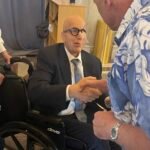Abstract:
The dream of fully autonomous vehicles has always been accompanied by concerns about their practical safety implications. The 2019 tragedy involving a Tesla vehicle veering off a highway, resulting in fatality and injuries, has brought these concerns into sharp relief. Given Tesla’s latest legal victory in a cascade of lawsuits regarding its Autopilot and Full Self-Driving (FSD) systems, a critical examination of the safety of these advanced driver-assistance systems (ADAS) is not only timely but necessary.
Introduction:
Tesla’s FSD technology has positioned the company as a front-runner in the race toward fully autonomous vehicles. The company’s assertive roll-out of Autopilot and FSD features has been met with both acclaim for innovation and scrutiny for safety. The recent incident east of Los Angeles underscores the potential risks associated with the deployment of self-driving technologies and questions the adequacy of current safety measures.
Technical Background:
Tesla’s self-driving suite uses a combination of cameras, ultrasonic sensors, and radar, supplemented by neural network processing for object detection and response. FSD’s capabilities include lane centering, adaptive cruise control, self-parking, the ability to summon the car from a garage or parking spot, and more recently, navigating on city streets.
However, Tesla’s insistence on achieving full autonomy with a vision-only system—eschewing the use of Lidar, widely considered a critical component for self-driving safety by most other companies in the autonomous vehicle space—has raised eyebrows in the engineering community.
Analysis of the Incident:
In the 2019 incident under scrutiny, the failure of a Tesla vehicle’s FSD feature to navigate a highway scenario correctly resulted in a critical malfunction. Despite the company’s claims of substantial improvements in their FSD beta software, this event aligns with a pattern of similar occurrences where the vehicles failed to recognize and negotiate certain road conditions, leading to crashes.
Regulatory Oversight and Safety Standards:
Tesla has navigated through legal challenges and regulatory scrutiny, with the recent court ruling in their favor. However, concerns persist among safety advocates and industry experts about the rigor of testing standards and the disclosures around the limitations of Tesla’s ADAS. The National Highway Traffic Safety Administration (NHTSA) and other regulatory bodies have been investigating various incidents involving Tesla’s driver-assist systems, questioning whether the company’s aggressive software updates and beta testing on public roads comply with prevailing safety norms.
Consumer Confidence and Market Impact:
While Tesla has cultivated a loyal customer base and continues to enjoy robust sales, incidents like the one near Los Angeles can damage consumer confidence. The company’s approach to transparency and customer education regarding the limitations of FSD is vital for maintaining trust and ensuring users operate these vehicles under safe conditions.
Conclusion:
The tragedy on a Los Angeles highway must serve as a catalyst for reevaluation of the safety protocols governing the deployment of self-driving technology as well as advertising expectations. As autonomous driving features evolve, companies like Tesla must balance innovation with a duty of care to their customers and other road users. Regulatory agencies should examine whether existing legislation is adequate to safeguard the public and whether companies are held to the highest safety standards amidst their technological pursuits.
This sobering event should be taken not just as a setback but as a clear directive for Tesla and the automotive industry at large—to recalibrate the development trajectory of autonomous vehicle technology with an unwavering focus on safety and reliability.



















